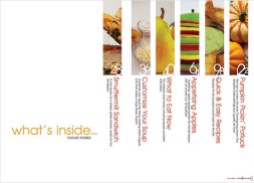Link to all Classes Class 1 Class 2 Class 3 Class 4 Class 5 Class 6
Welcome to your third Photoshop class. Be honest: did you practice what you have learnt last week? Make sure to practice Photoshop as much as you can, preferably daily. If you create a habit and make it fun your learning curve will be steep. If you are to busy to practice every day, try more than once a week.

- Only practice will help you learn! Photo by BreonWarwick on morgueFile
Today we will look at:
- The Layer panel
- How to create a new layer
- How to move layers
- How to make a layer active
- How to hide and show a layer
- How to link layers
- How to group layers
- How to delete layers
- How to draw shapes
- How to create a clipping mask
- How to use the Gaussian Blur
- How to rasterize a layer
- How to merge two layers and
- How to flatten an image
You can see that we will be rather busy. You will also need to provide me with an image as a result.
If you already now all of the tasks above you can do this straight away –
Your Tasks for this class:
Task 1 – Start a new document – 700x500px at 150ppi (pixels/inch) resolution and background contents set to transparent. Create a clipping mask with a rounded rectangle (fill most of the document space and with a 40px radius) of a photo of geese in Ameland, inthe Netherlands by Frans Schouwenburg. The photo is available under Creative Commons agreement and can be found on Flickr.com. If you cannot open the file get it from here:

Create a Gaussian blur (7.4px) of the clipping mask and flatten the image. Save as a JPEG with this title: Class3_T1_Your_full_name.jpg (example: Class3_T1_Toni_Varsetti.jpg). Upload the file to MyKangan and keep a copy of the JPEG.
Task 2 – Use the same document from task 1 or start a new document – 700x500px at 150ppi (pixels/inch) resolution and background contents set to transparent. Type the initials of your name in Impact Regular 200pt. If you have not done so in task 1, download the image of the geese in Ameland (see Task 1 for link). Place the file in your document (File>Place). When excepting the size make sure that the image is larger than the initials. Finally create a clipping mask (the photos should only appear inside the text now). Save the file as a PNG with this title: Class3_T2_Your_full_name.png (example: Class3_T2_Toni_Varsetti.png). Upload the file to MyKangan and keep a copy of the PNG.
The Layer Panel
The ability to create layers is a central aspect of Photoshop. It works like a collage, you place one photo on top of another and the one on top covers up the photos below it.

- Layers Panel – Source: The Graphic Designer’s Digital Toolkit, Alan Wood, 5th Edition, 2011
The Layer palette is located in the bottom right-hand corner with a tab called LAYERS. There are two menu items you should be aware of in the drop down main menu: Layers and Window.
Click on Layers to see a lot of actions that you can perform with layers. (See image) You can perform these functions directly from the layers palette as well, by clicking on the Layer Options Tab (small icon in the top right of the layers palette).
Click on Window in the main menu and see Layers ticked. This is were you can activate the Layer palette if you cannot see it on your screen. (If you are using a Windows PC notice the shortcut F7? This allows you to activate or deactivate the layers palette.)
Please read all the options of the image of the Layers panel (above) before advancing.
How to create a new Layer
- You can simply click on the small icon in the Layers panel that looks like a sheet of paper (too slow)
- You click on the Layer tab in the menu bar: Layer>New>Layer (too slow) or
- You use the short cut: Ctrl+Shift+Alt+N (Mac: command+shift+option+N) – Nice! This will immediately create a new layer on top of your active layer.
- You can use this short cut: Ctrl+Shift+N. This will open a options panel before the layer is created.
How to move a Layer
- Drag the layer in the layer panel into the new position. You can move it up (=on top of other layers in the workspace) or down (it will be partly hidden by layers above. This is an easy and intuitive way. You will need to sometimes move it right between two layers and wait for a dark line to appear before releasing the layer.
- You can also use the shortcuts: Ctrl+[ (or Cmd+[ on Mac) to move the layer up and Ctrl+] (or Cmd+] on Mac) to move the layer down.
- You can use the Menu bar: Layer>Arrange>Bring Forward (or Backward)
How to make a Layer active or inactive
A layer needs to be active for you to be able to work with the artwork on the layer. Photoshop allows you to work on one layer at the time.
- The active layer is high-lighted or shaded (generally it is the layer with the blue background and white text in the layers panel.)
- To activate a layer simply click on the layer in the layer panel
If you want to select numerous layers hold the Ctrl button (Mac: Cmd) while selecting more layers.
How to hide and show a Layer
You can make the content of a layer invisible by clicking on the eye icon in the Layers panel. Clicking it again will make the content visible.
How to link Layers
Linking layers can be done by selecting numerous layers (with Ctrl) and then clicking on the chain symbol in the Layers panel.
How to group Layers
Group layers by selecting numerous layers and then either pressing Ctrl+G (Mac Cmd+G) or create a new group by clicking the Create a new group icon in the Layers panel (it looks like a folder) and drag any layer you want into it.
How to delete Layers
The easiest way is to select the layer and hit Backspace; this happens immediately.
If you are the old school type you might to simply drag the layer into the bin icon or click the bin icon and press enter to delete the layer.
How to draw Shapes
Before you draw a shape place an image in the document (File>Place). In the example I have placed a photo of grass (found on http://www.morguefile.com > Petersphoto)
There are several tools that allow you to draw shapes. They basically draw vector graphic shapes that are linked to a layer. Try the Rounded Rectangle Tool tool. (If the tool is not visible, hold down the Rectangle tool near the bottom of the toolbox.) The shortcut is U – and Shift+U allows you to scroll through the tools options (it should be the second.)
Draw a rounded rectangle with a 25px radius (drag to draw). You will notice that drawing a shape will create a new layer as a default!
Try the other drawing tools as well.
I chose the rabbit custom shape. To find it choose the custom shape tool, it looks like a blob, see the sample images! Then go into the options menu bar and select the down arrow next to the custom shape (most likely a black arrow). This will open all the different custom shapes. Next click on the small outward arrow head in the top right of the box you have just opened. Select all and Ok. This will open all the custom shapes that Photoshop comes with. The rabbit should be in the selection.
How to create a Clipping Mask
Keep only one shape layer and delete all the others.
Place an image in the workspace: File>Place. Make sure the image is larger in size than the shape on the layer below. Right-click on your image layer and select Create Clipping Mask.
Male sure that you do this to your image layer and that the image layer is on top!!!
Your image layer has been reduced to the shape of the shape layer below. 🙂
- Try to move just the image by selecting the image layer.
- Try to move just the shape layer.
What is the difference?
How to use the Gaussian Blur
Make sure your shape thumbnail on your shape layer is selected. Go to the menu bar: Filter>Blur>Gaussian Blur and enter 7.4px for the Radius.
You should be prompted if you want to rasterize the layer. Click yes.
How to merge two Layers
Select two layers (left click + Ctrl) then right click and select Merge Layers.
How to flatten an Image
Right click on any layer and select Flatten Image or press Ctrl+Shift+E (Cmd+Shft+E on Mac)
Tasks
This completes today’s tutorials, please perform the below tasks:
Task 1 – Start a new document – 700x500px at 150ppi (pixels/inch) resolution and background contents set to transparent. Create a clipping mask with a rounded rectangle (fill most of the document space and with a 40px radius) of a photo of geese in Ameland, inthe Netherlands by Frans Schouwenburg. The photo is available under Creative Commons agreement and can be found on Flickr.com. Create a Gaussian blur (7.4px) of the clipping mask and flatten the image. Save as a JPEG with this title: Class3_T1_Your_full_name.jpg (example: Class3_T1_Toni_Varsetti.jpg). Upload the file to MyKangan and keep a copy of the JPEG.
Actually – in class we ended up straying and did the grassy rabbit instead. I am happy with either. See image:

Task 2 – Use the same document from task 1 or start a new document – 700x500px at 150ppi (pixels/inch) resolution and background contents set to transparent. Type the initials of your name in Impact Regular 200pt. If you have not done so in task 1, download the image of the geese in Ameland (see Task 1 for link). Place the file in your document (File>Place). When excepting the size make sure that the image is larger than the initials. Finally create a clipping mask (the photos should only appear inside the text now). Save the file as a PNG with this title: Class3_T2_Your_full_name.png (example: Class3_T2_Toni_Varsetti.png). Upload the file to MyKangan and keep a copy of the PNG.
Example:

Here is a link to a Clipping Mask tutorial on SalinStudio.com






























































































![world war propaganda_Auch du sollst beitreten The concept was used on the German side as well with this 'Auch du sollst beitreten zur Reichswehr' [You too should join the German Army], design by Julius Engelhard, Image: courtesy of mental_floss](https://classoffederico.files.wordpress.com/2014/04/world-war-propaganda_auch-du-sollst-beitreten.jpg?w=172&resize=172%2C220#038;h=220)






































0 Comments